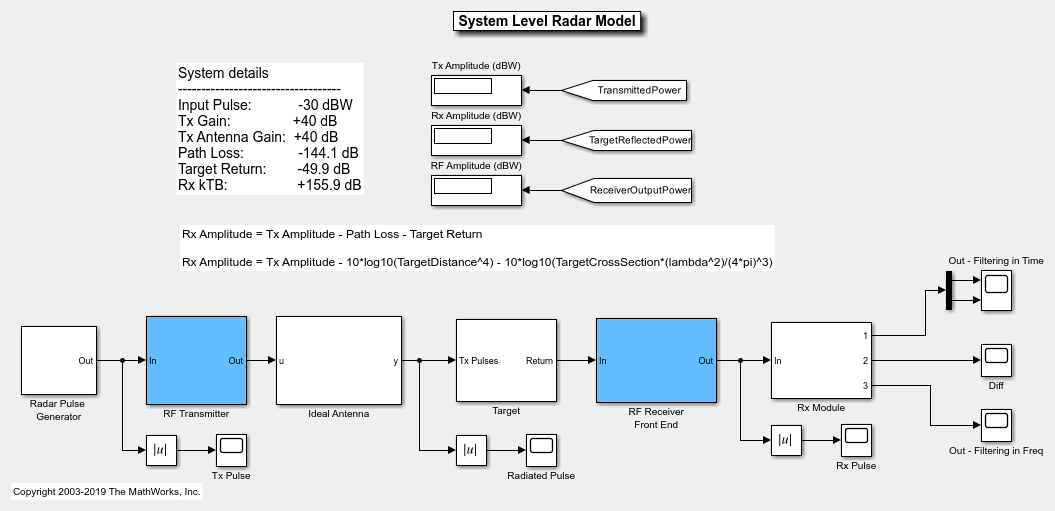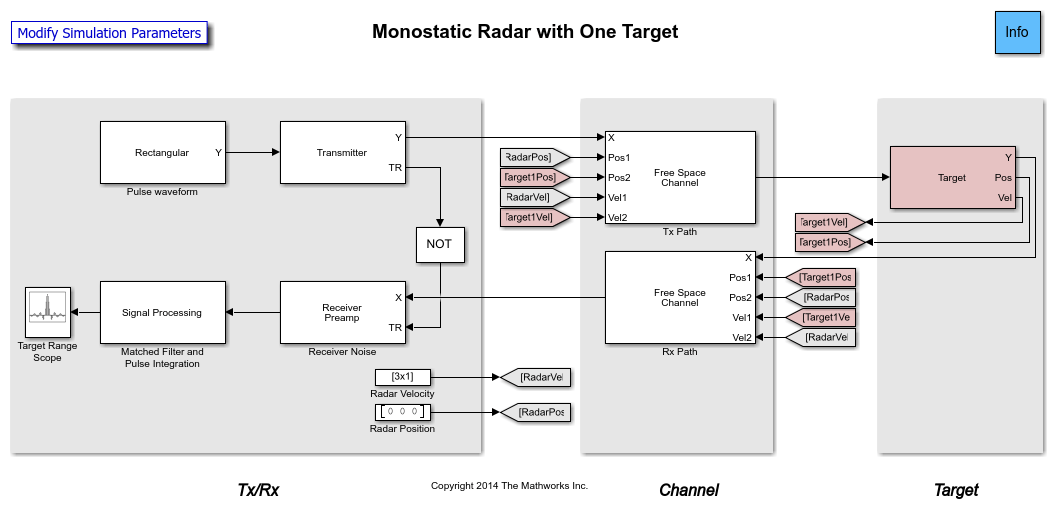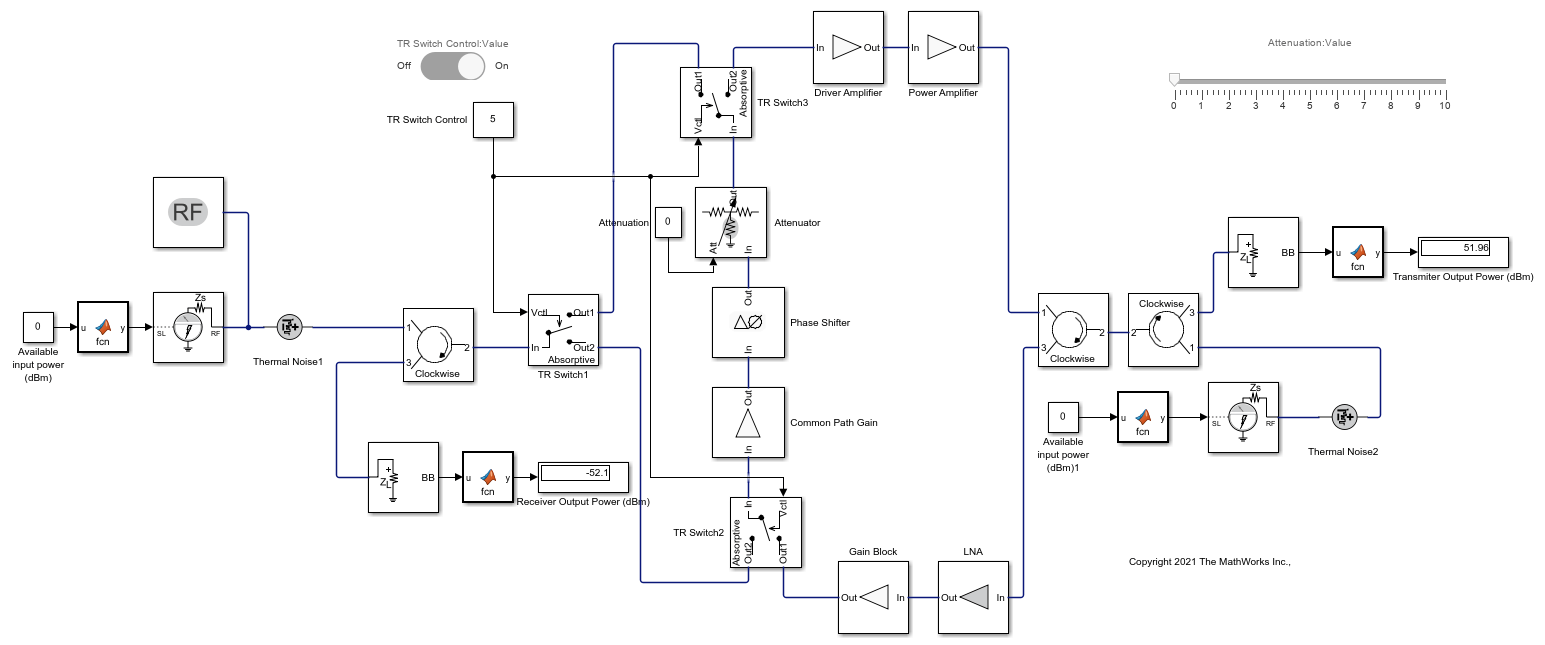Radar System Modeling
When modeling radar systems, it is necessary to design RF transmitters and RF receivers. RF transmitters typically consist of an amplifier and a filter. Since the filter is a linear device and the amplifier is nonlinear, it is possible to divide the RF transmitter into two subsystems. This division allows you to use different simulation frequency sets in each subsystem, enabling a tradeoff between simulation speeds and loss of inter-stage loading effects usually present in a cascaded chain configuration.
For RF receiver design, you can use a direct conversion structure with a low noise amplifier (LNA) and matching networks. You can describe the LNA using a touchstone file, but the local oscillator must include a phase noise model. Similar to RF transmitters, RF receivers can be split into linear and nonlinear subsystems. The linear subsystem can encompass matching networks, the LNA, and the filter, while the nonlinear subsystem can include the Mixer block and final stage amplifiers. This separation allows you to model and analyze receiver performance more efficiently.
Employ these techniques in radar system modeling to effectively design and simulate the behavior of RF transmitters and receivers. This ensures accurate representation of their characteristics and enabling comprehensive analysis of the overall radar system.



